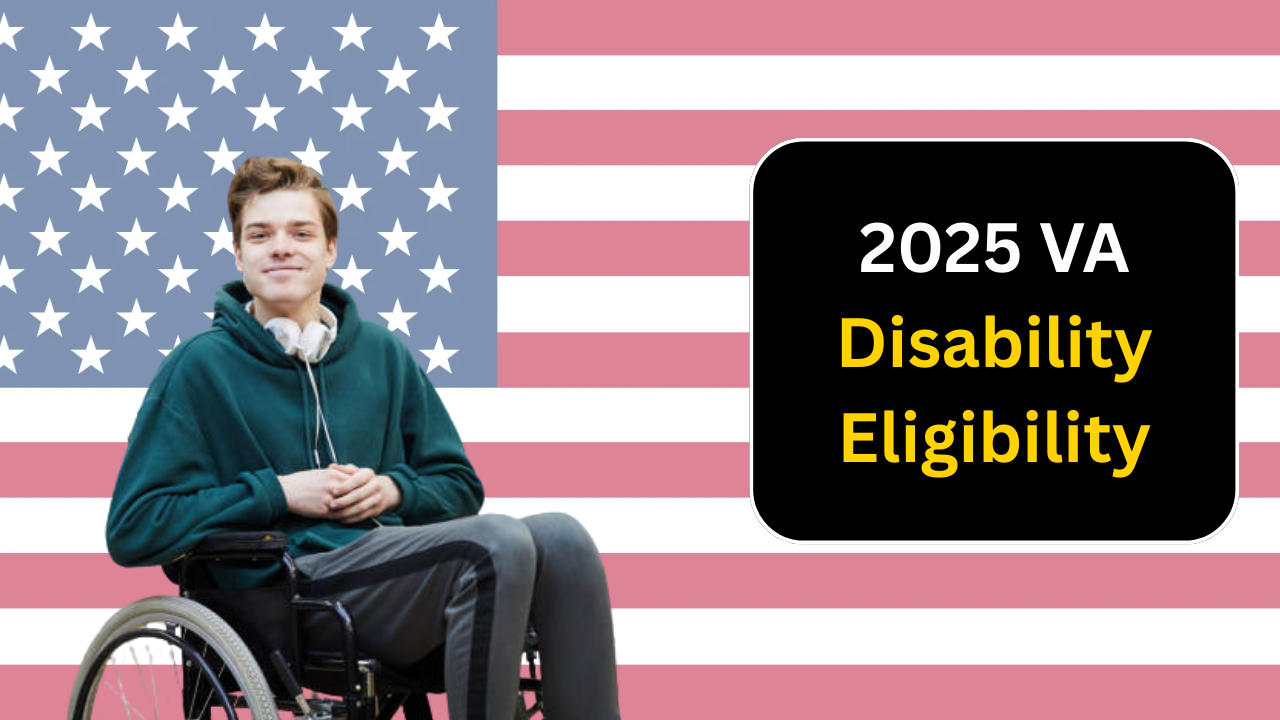The U.S. Department of Veterans Affairs (VA) provides benefits to veterans with disabilities that are a result of their service in the military.
These benefits are vital for those who have experienced physical or mental health issues due to their time in service. In 2025, there will be specific eligibility requirements and new updates to ensure veterans can access these benefits smoothly.
This article outlines the latest information on VA disability eligibility, the new criteria, and payment dates to help veterans understand their benefits and ensure they receive the assistance they deserve.
What is VA Disability Compensation?
VA disability compensation is a financial benefit provided to veterans who have disabilities that are connected to their military service.
This compensation is tax-free and is based on the severity of the disability, as determined by the VA. Veterans who are rated with a disability can receive a monthly payment to help cover living expenses and other costs related to their condition.
Eligibility Requirements for VA Disability in 2025
To qualify for VA disability compensation, veterans must meet certain criteria. These requirements include having a current diagnosis of a service-related disability, proving that the disability occurred during military service, and meeting the required service time.
The eligibility criteria are updated every year, and 2025 introduces some new rules. Here’s a breakdown of the key factors:
- Service Connection: To qualify, veterans must have a disability that is directly related to their military service. This can include physical injuries, mental health conditions, or diseases caused or aggravated during service.
- Disability Rating: The VA assigns a disability rating based on the severity of the veteran’s condition. Ratings range from 0% to 100%, and the amount of compensation increases with the rating. Veterans with higher disability ratings receive higher payments.
- Service Time: The veteran must have served in the military for a minimum period, usually at least 24 months, unless they were discharged for a service-related condition. Certain exceptions are made for veterans who served in combat or experienced extreme circumstances during service.
- Current Medical Diagnosis: Veterans must provide evidence of a current disability that is diagnosed by a healthcare professional. This can include medical records, doctors’ statements, or other proof of diagnosis.
- Proof of Disability: Veterans need to provide evidence that their disability was caused or worsened by their military service. This could involve submitting medical records, witness statements, or even testimonies from fellow service members.
- Income and Financial Status: While VA disability compensation is not based on income, veterans with low incomes might qualify for additional benefits, such as pension programs, if they meet specific financial criteria.
- New Criteria in 2025: Starting in 2025, there are a few important updates to the eligibility process. These include more streamlined medical assessments and expanded access to telehealth services for veterans who have difficulty attending in-person appointments. The VA is also working to reduce the backlog of disability claims, making it easier for veterans to apply and receive their benefits faster.
How to Apply for VA Disability Benefits in 2025?

The application process for VA disability benefits in 2025 has been simplified through modernized technology. Here’s a step-by-step guide on how to apply:
- Gather Your Documents: Before applying, ensure you have your military service records, medical records, and proof of disability ready. You may also need to provide any supporting documents that show how your condition is linked to your military service.
- Create an Account on VA.gov: The best way to apply for VA disability benefits is through the VA’s official website (VA.gov). Create an account, which will allow you to track your application status and communicate with the VA.
- Complete the Application: The application involves providing personal information, details about your disability, and service history. Be as detailed as possible to ensure your claim is processed efficiently.
- Submit Supporting Evidence: Along with your application, submit any supporting documents that can help prove your eligibility, such as medical records, service records, and personal statements.
- Schedule Your VA Examination: In some cases, the VA may require you to undergo a medical examination to assess the severity of your condition. These exams are often scheduled at VA medical centers or through authorized providers.
- Wait for the Decision: After submitting your application and completing any required exams, you will need to wait for the VA to process your claim. This may take several months, but you can check the status of your claim on the VA website.
VA Disability Payment Dates for 2025
VA disability payments are typically issued monthly, but the exact dates can vary. In 2025, the VA continues to follow a regular payment schedule, with payments being made on the first of every month. However, if the first falls on a weekend or holiday, payments are issued on the preceding business day.
For veterans who receive payments through direct deposit, funds are typically deposited into their bank accounts on the scheduled date. Those who receive checks by mail should allow extra time for delivery.
How Much Compensation Can Veterans Receive?
The amount of compensation veterans receive is determined by their disability rating. In 2025, the compensation rates are as follows:
- 0% Rating: Veterans with a 0% rating do not receive compensation, but they may still be eligible for other benefits such as healthcare or vocational rehabilitation.
- 10% to 20% Rating: Veterans with disabilities rated at 10% or 20% can receive between $150 to $300 per month.
- 30% to 60% Rating: Veterans with a rating between 30% and 60% can receive between $400 to $1,200 per month.
- 70% to 100% Rating: Veterans with a rating of 70% to 100% can receive between $1,400 and $3,000 per month.
Additional compensation may be available for veterans who have dependents, such as children or a spouse.
Conclusion
The VA disability program is an essential benefit for veterans who have served their country and now suffer from disabilities related to their service.
Understanding the eligibility requirements and how to apply is crucial to ensuring veterans receive the support they need. In 2025, the process is streamlined and designed to help veterans get their benefits quickly and efficiently.
If you believe you may be eligible for VA disability compensation, don’t hesitate to start your application today. It could be the key to financial stability and the care you deserve.



